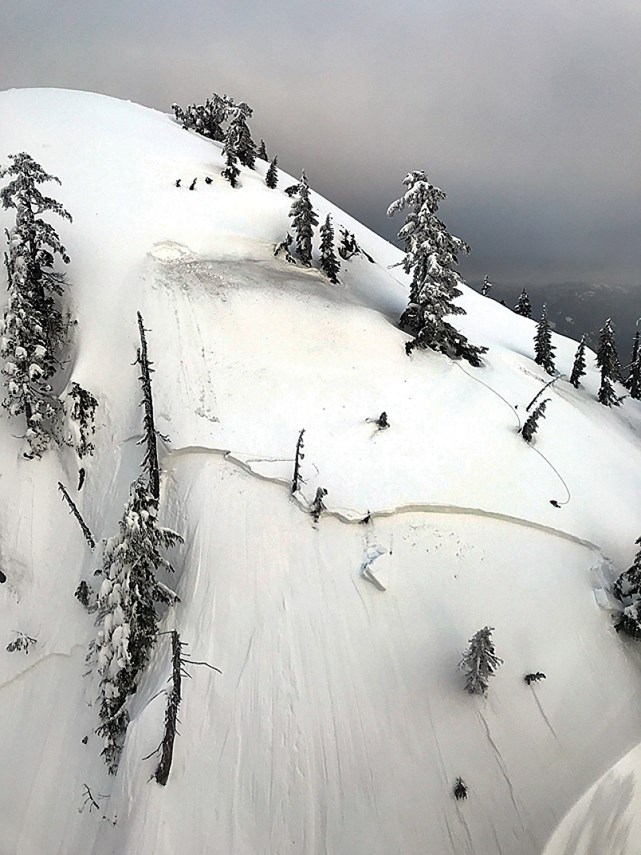In winter, the North Shore mountains are well-known as a snowshoers’ destination.
But the peaks that look so pretty in Instagram posts can also hide deadly hazards if you don’t know where to look for them.
“The North Shore is often underestimated,” said André-Jean Maheu, a member of North Shore Rescue.
Mountain peaks here aren’t massive the way they are in the Rockies. “We don’t usually have those Discovery Channel avalanches,” he said.
But the local mountains have other hazards, like more “terrain traps,” like boulders, trees and cliffs that increase the chances of being injured in even a small avalanche, said Maheu. If there happens to be a cliff that an avalanche pushes you over, even a transceiver and a shovel may not save your life.
Tragically, that is what happened on Runner Peak in February this year, when an avalanche that swept across a hiking trail just east of Mount Seymour pushed a 39-year-old snowshoer over a cliff and down about 600 metres to his death.
Knowing how to assess avalanche danger is especially important with the increase in new snowshoers heading into the backcountry.
“It’s easy enough to go buy snowshoes and start walking around the mountains,” said Mark Bender, an avalanche forecaster with Avalanche Canada. “People may not even be aware they are at risk.”
That was likely the case when a group of five snowshoers died on Mt. Harvey near Lions Bay in 2017 after the cornice they were standing on collapsed.
Building awareness of avalanche and other hazards is the purpose of a free afternoon workshop being held in North Vancouver on Saturday.
Presented by Avalanche Canada, the Alpine Club of Canada and the Federation of Mountain Clubs of BC, the workshop will focus on how to enjoy the backcountry safely and include presentations from both Bender and Maheu on how to assess avalanche hazards.
Snowfall accumulation, wind and temperature all play a part in avalanche danger, along with terrain.
Avalanche Canada regularly puts out hazard ratings during the winter for various areas of the backcountry, but too many people opt not to pay attention to them, said Maheu – unless the danger rating is high or extreme. But moderate risk can also present a real danger, he said – especially if snowshoers find themselves in terrain they haven’t adequately assessed.
The free avalanche awareness workshop takes place at North Shore Alliance Church, 201 East 23rd St., on Saturday, Nov. 9. Doors open at 1:30 p.m. and presentations will begin at 2 p.m.
You can pre-register for the session on Avalanche Canada’s website at avalanche.ca/events/heads-up-no-van-2019.



